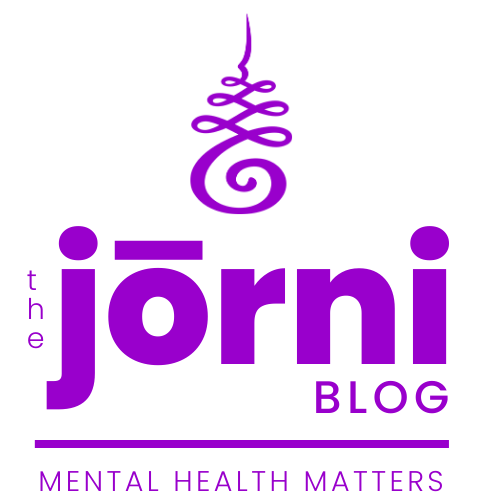Understanding Stress and Overwhelm
In today's world, feeling stressed and overwhelmed is pretty normal for most of us. It seems like these feelings are always around, making us feel tired and worried because of how busy and fast everything is. But just knowing that stress is there isn't enough. We need to change how we deal with it. Instead of letting it knock us down, we can learn ways to handle it better and feel more at ease and happy.
The real challenge is learning to see stress in a new way. We want to get to a place where we're not always feeling swamped by everything we have to do. We can aim for feeling calm and able to deal with problems without getting too stressed out. This change is really important for feeling good, not just in our minds but also in our bodies and hearts.
To make this change, we need to look at the whole picture, including our thoughts, feelings, and physical health. There are lots of different ways to help ourselves feel less stressed and more in control. By trying out new and old methods, we can find what works best for us. This can lead us to a happier life, where stress doesn't control us, but we know how to handle it and keep moving forward.
"Times of stress are also times that are signals for growth, and if we use adversity properly, we can grow through adversity."
- Rabbi Dr. Abraham Twerski
Navigating Change
Emma O'Brien stands out as a dynamic force in the realms of personal development and business growth, blending her certifications as a HeartMath coach and a Martha Beck Wayfinder trained life coach with a rich tapestry of compassionate, intuitive, and practical coaching skills. Her extensive experience empowers clients to shift their mindsets and enact meaningful changes in their lives. Emma specializes in guiding individuals through the maze of getting unstuck, healing from life’s burnout, overcoming overwhelm, and reigniting their passion and purpose with renewed vigor.

Beyond her coaching practice, Emma enriches her offerings with over two decades of entrepreneurial expertise. An award-winning dog photographer who has successfully navigated the business landscapes of both the UK and South Africa, she brings a wealth of knowledge in small business marketing and strategy to the table. This unique blend of skills makes her an invaluable resource for clients looking to not only transform their personal lives but also to elevate their business pursuits.
Embracing HeartMath: A Path to Inner Balance
In a world where stress seems to be a constant companion, finding effective ways to manage and overcome it is crucial. HeartMath is a unique approach that offers just that by harnessing the power of the heart-brain connection. This method is not just about temporary relief but about building a lasting foundation of emotional resilience and inner balance. Let's dive deeper into what HeartMath is, why it's effective, and how we can apply its principles to achieve a state of coherence and wellbeing.
What is HeartMath?
HeartMath is an innovative set of techniques and tools designed to enhance emotional wellbeing through the scientific understanding of the heart-brain communication system. It combines modern science with practical exercises to improve heart rate variability (HRV), which is closely linked to our emotional states and stress levels. By focusing on this connection, HeartMath aims to reduce stress, increase resilience, and promote a positive outlook on life.
Understanding the Heart-Brain Connection
At the heart of the HeartMath approach is the recognition of the heart's role in emotional processing and stress management. The heart and brain constantly communicate through various pathways, influencing our emotions, cognitive functions, and stress responses. By understanding this connection, we can learn to regulate our emotional responses more effectively, leading to improved wellbeing.

Why HeartMath Works
HeartMath works by bringing our heart rate variability into a coherent state, which is indicative of a balanced and harmonious state between the heart and brain. This coherence improves our ability to think clearly, make better decisions, and remain calm in challenging situations. It's not just about managing stress in the moment. It's about developing a resilient mindset that can handle life's ups and downs more gracefully.
Practical HeartMath Strategies for Everyday Life
Learning how to manage stress and foster emotional wellbeing is crucial for navigating the complexities of modern life. HeartMath provides practical strategies that anyone can incorporate into their daily routine to achieve this. These methods are designed to enhance our ability to respond to stress in a more balanced and coherent way, thereby improving our overall quality of life.
The Quick Coherence® Technique
A cornerstone of the HeartMath approach is the Quick Coherence® Technique. This straightforward exercise involves a few simple steps: first, focus your attention on the area around your heart. Imagine your breath flowing in and out of this space as you breathe deeply and evenly. Then, bring to mind a positive or joyful experience, feeling it as vividly as possible. This technique aims to shift your heart's rhythm into a coherent state, which can significantly calm your mind and emotions. It's an effective tool for quickly reducing feelings of stress and overwhelm.
Expanding Your Toolkit with Additional Exercises
While the Quick Coherence® Technique is a great starting point, HeartMath also offers a range of other practices to build upon this foundation.

The Heart Lock-In® Technique
This involves focusing on a positive emotion, such as appreciation or love, for an extended period to enhance emotional stability and coherence.
The Freeze-Frame® Technique
Used in moments of decision-making or high stress, this practice helps you step back to view a situation from a new perspective, leading to clearer, more effective decisions.
Regular engagement with these exercises can lead to significant improvements in resilience and emotional wellbeing. They are designed to be accessible and adaptable, fitting easily into your daily routine, whether you're at home, at work, or on the move.

By incorporating HeartMath strategies into your life, you can begin to cultivate a sense of inner calm and clarity, even in the face of life's inevitable stresses. These techniques not only offer immediate relief in moments of overwhelm but also contribute to a long-term transformation in how we experience and respond to stress. With practice, HeartMath can help us navigate our lives with greater ease, resilience, and emotional intelligence.
Exploring Martha Beck's Wayfinder Approach to Wellbeing
In our quest for managing stress and finding balance, Martha Beck's Wayfinder life coaching offers a refreshing and profound approach that emphasizes the importance of inner harmony and personal truth. Beck's methodology is not just a set of techniques but a journey towards understanding and aligning with our deepest selves. It challenges us to look beyond the chaos of external demands and discover the path that truly resonates with our core. This section delves into the essence of the Wayfinder approach, exploring its foundations, practical strategies, and how it can transform our relationship with stress and overwhelm.
The Foundation of Wayfinding
At the heart of Martha Beck's Wayfinder approach is the conviction that genuine happiness and resilience stem from being in harmony with our true nature. This concept goes beyond mere stress management; it's about discovering who we are at our core and aligning our lives with those inner truths. It's a process of peeling back the layers of external expectations to reveal our authentic desires and values.
The Role of Self-Discovery
Engaging with this approach requires us to embark on a journey of self-discovery, asking ourselves what we truly want out of life, beyond societal norms and the pressures of everyday living. This introspection can be challenging but ultimately leads to a more fulfilling and centered existence.

Tools for Inner Clarity
The Wayfinder coaching method equips us with tools and exercises to enhance our intuition and inner wisdom. Practices like "wordlessness," which encourages silence and mindfulness, and "oneness," which fosters a sense of connection with everything around us, help us tap into deeper levels of awareness and creativity. These strategies are designed to build a foundation of inner peace and clarity.
Embracing Mindfulness and Connection
By integrating these practices into our daily lives, we learn to approach life's stresses with a new perspective. Instead of being overwhelmed by challenges, we can view them as opportunities for growth and learning, guided by our inner compass. This shift doesn't happen overnight, but with practice, the Wayfinder approach can lead to significant changes in how we perceive and interact with the world around us.
The Wayfinder journey, inspired by Martha Beck's life coaching principles, invites us to rethink our relationship with stress and the pursuit of wellbeing. It's about more than just coping mechanisms; it's a transformative process that encourages us to live in alignment with our deepest selves. By exploring and applying the Wayfinder approach, we open ourselves to a life of greater purpose, peace, and personal fulfillment, navigating life's storms not just with resilience but with a sense of adventure and authenticity.
Expanding Our Toolkit
In our journey towards a more balanced and fulfilling life, it’s essential to explore a variety of strategies that go beyond conventional methods. While HeartMath and Wayfinder coaching offer profound insights into emotional regulation and self-discovery, there are other tools and practices that can complement these approaches, providing a more comprehensive framework for managing stress and building resilience. From mindfulness and meditation to the fundamental aspects of physical wellbeing, these additional strategies can play a pivotal role in our overall mental and emotional health. Let’s delve deeper into these practices and discover how they contribute to our resilience.
The Essence of Mindful Living
Mindfulness and meditation teach us to live more consciously, focusing on the present moment without judgment. This awareness can transform our approach to stress, allowing us to notice our reactions without being overwhelmed by them. Meditation, in particular, offers a structured way to practice mindfulness, guiding us towards inner peace amidst the chaos of daily life.

Exercise: A Natural Stress Reliever
Physical activity is a powerful tool for managing stress. Engaging in regular exercise releases endorphins, the body’s natural mood lifters, which can reduce feelings of stress and anxiety. Whether it’s a brisk walk, a yoga session, or more vigorous activities, finding a form of exercise that you enjoy can be a key component of your resilience toolkit.
Nutrition and Sleep: The Foundations of Health
A balanced diet and sufficient rest are crucial for maintaining physical and emotional health. Eating a variety of nutritious foods fuels the body and mind, supporting our ability to cope with stress. Likewise, quality sleep is essential for recovery and regeneration, impacting our mood, energy levels, and overall resilience.
The Healing Power of Creativity
Creative activities such as writing, painting, or playing music offer valuable outlets for expression and stress relief. These activities can serve as a form of meditation in motion, helping to quiet the mind and express emotions that might be difficult to articulate otherwise.

Building a Supportive Community
Strong social connections are vital for emotional wellbeing. Building relationships with friends, family, or support groups provides a sense of belonging and support, making it easier to navigate life’s challenges. Sharing experiences and feelings with others can lead to deeper connections and mutual support in times of stress.
Wellbeing Through Diverse Practices
Pursuing a holistic approach to wellbeing invites us to explore a wide array of practices, each distinct yet interconnected, offering a fresh perspective on stress management. This method goes beyond traditional stress relief techniques, inviting innovation and personalization in crafting a lifestyle that inherently nurtures peace and balance. It’s an invitation to consider novel and diverse strategies that may not traditionally fall under stress management categories but are equally vital in fostering a sense of wellbeing and resilience.
Delving into areas such as environmental wellness, for instance, highlights how our surroundings impact our mood and stress levels. Creating a personal space that reflects calmness and clarity can significantly influence our daily stress perception. Similarly, engaging in learning new skills or hobbies not only diverts the mind from stressors but also instills a sense of achievement and growth. This approach emphasizes the importance of curiosity and continuous learning as tools for mental resilience.

Moreover, embracing practices like volunteering and community service can offer profound stress-reducing benefits. By shifting focus outward and contributing to the welfare of others, we experience a shift in perspective, often leading to reduced personal stress levels and a heightened sense of purpose and connection. This expanded view of holistic wellbeing encourages us to look beyond conventional methods and integrate a broader spectrum of activities into our lives, ultimately enriching our journey towards resilience and fulfillment.
The TAKEAWAY
In today's fast-paced environment, effectively managing stress isn't just a nice-to-have, it's essential for maintaining mental and physical health. Exploring a variety of stress management techniques, including HeartMath, Martha Beck's Wayfinder coaching, and broader strategies like mindfulness, physical activity, and community engagement, reveals the depth and breadth of tools available to us. These methods are not just about coping in the moment; they're about fundamentally changing how we interact with the world around us, turning stress from a constant battle into something we can navigate and control.
The reality that stress, if left unchecked, can lead to a host of health issues, decreased productivity, and a diminished quality of life. The diverse approaches highlighted here underscore the importance of finding personalized strategies that resonate with your lifestyle and goals. There's no one-size-fits-all solution; it's about mixing and matching techniques to discover what effectively reduces your stress levels and enhances your overall wellbeing.

Taking action to manage stress is a proactive step towards not just surviving but thriving in our current society. By integrating a variety of stress management practices into our lives, we equip ourselves with the tools to face challenges head-on, improve our health, and enhance our capacity for enjoying life. It's a call to not passively accept stress as an unavoidable aspect of life but to actively engage with it in a way that promotes personal growth and wellbeing.
